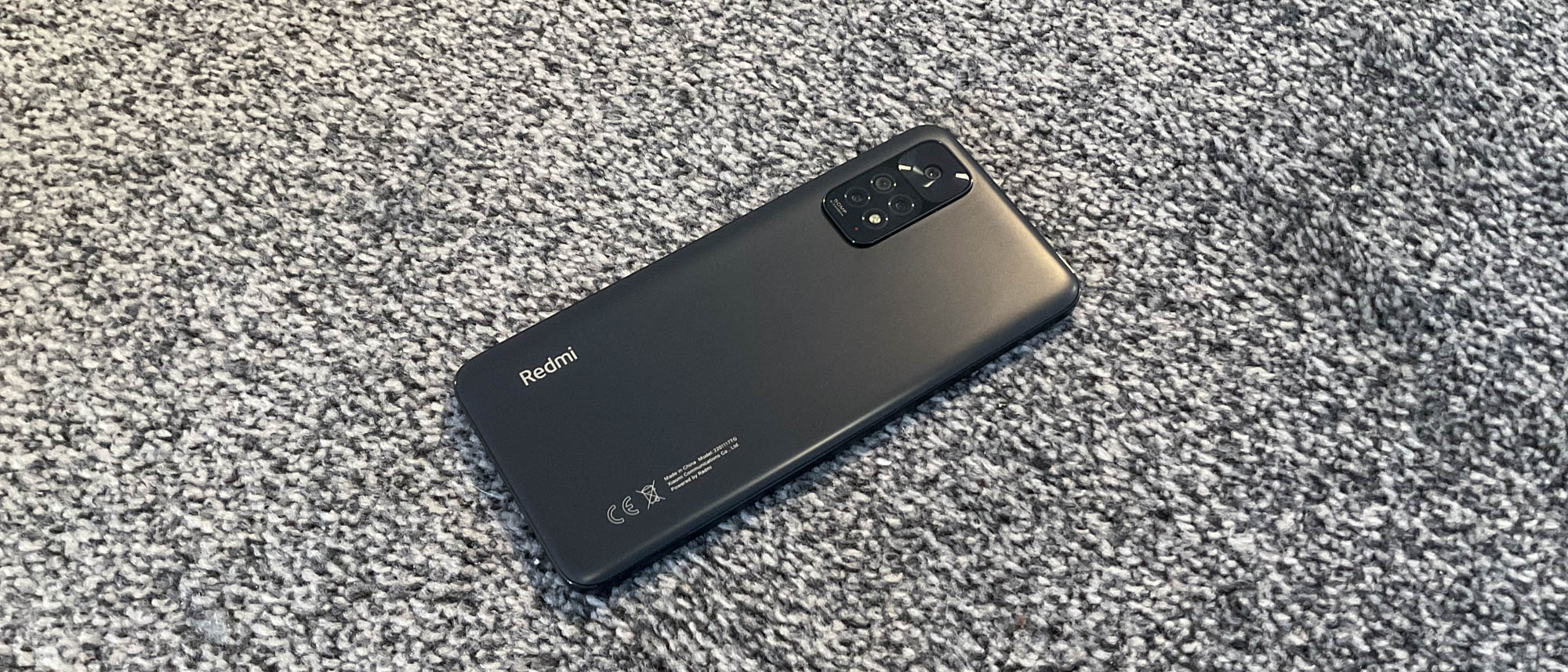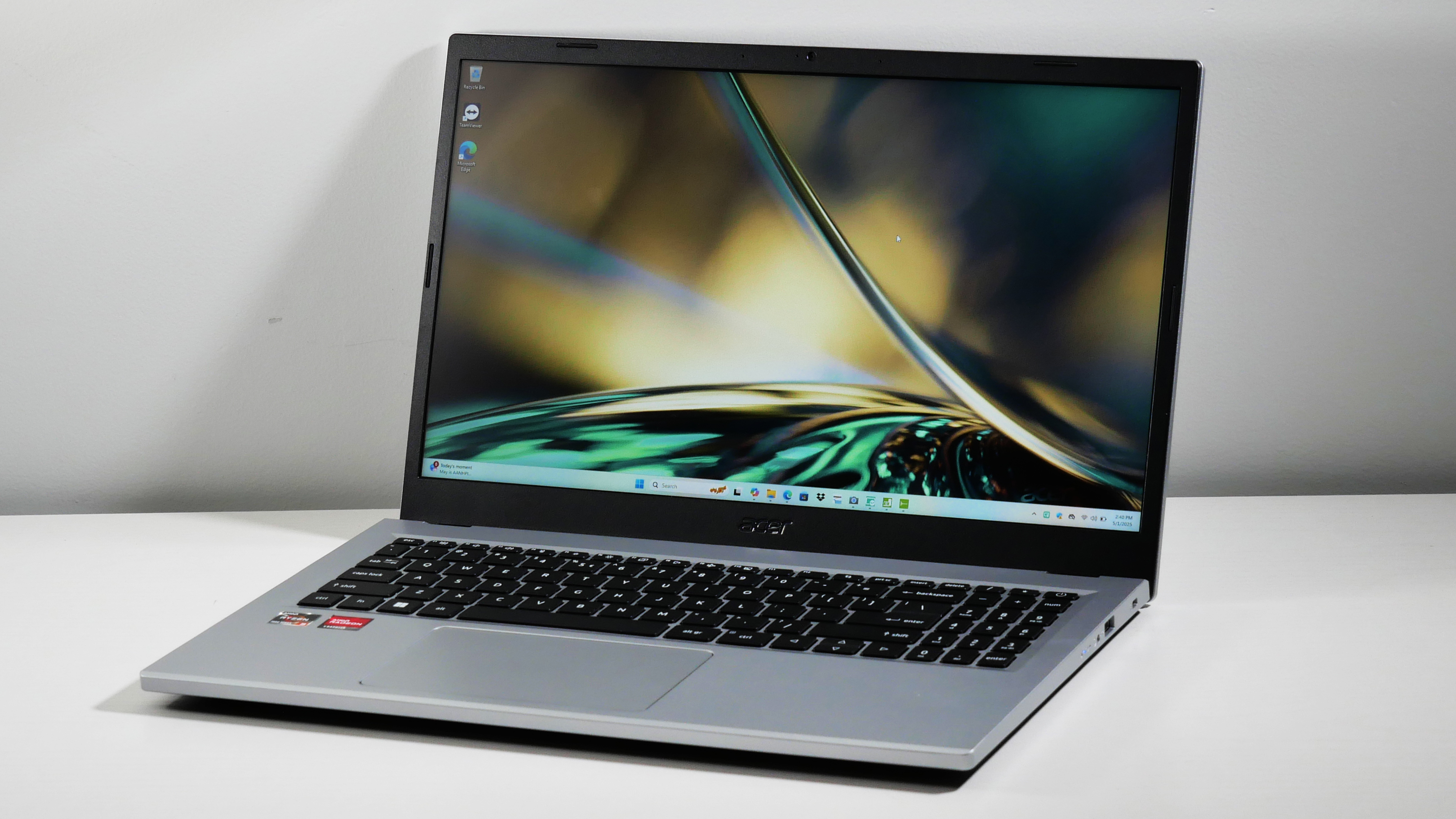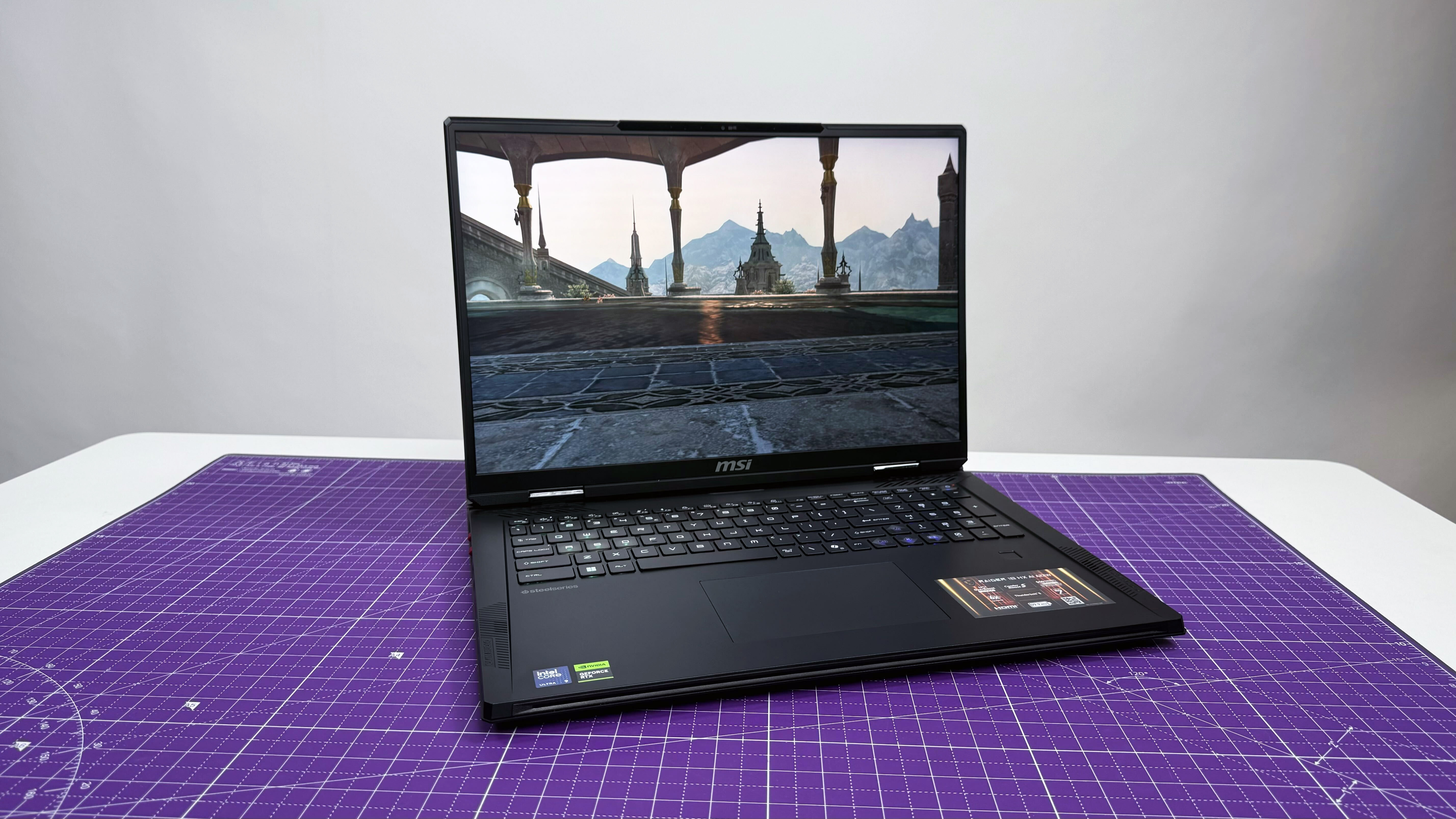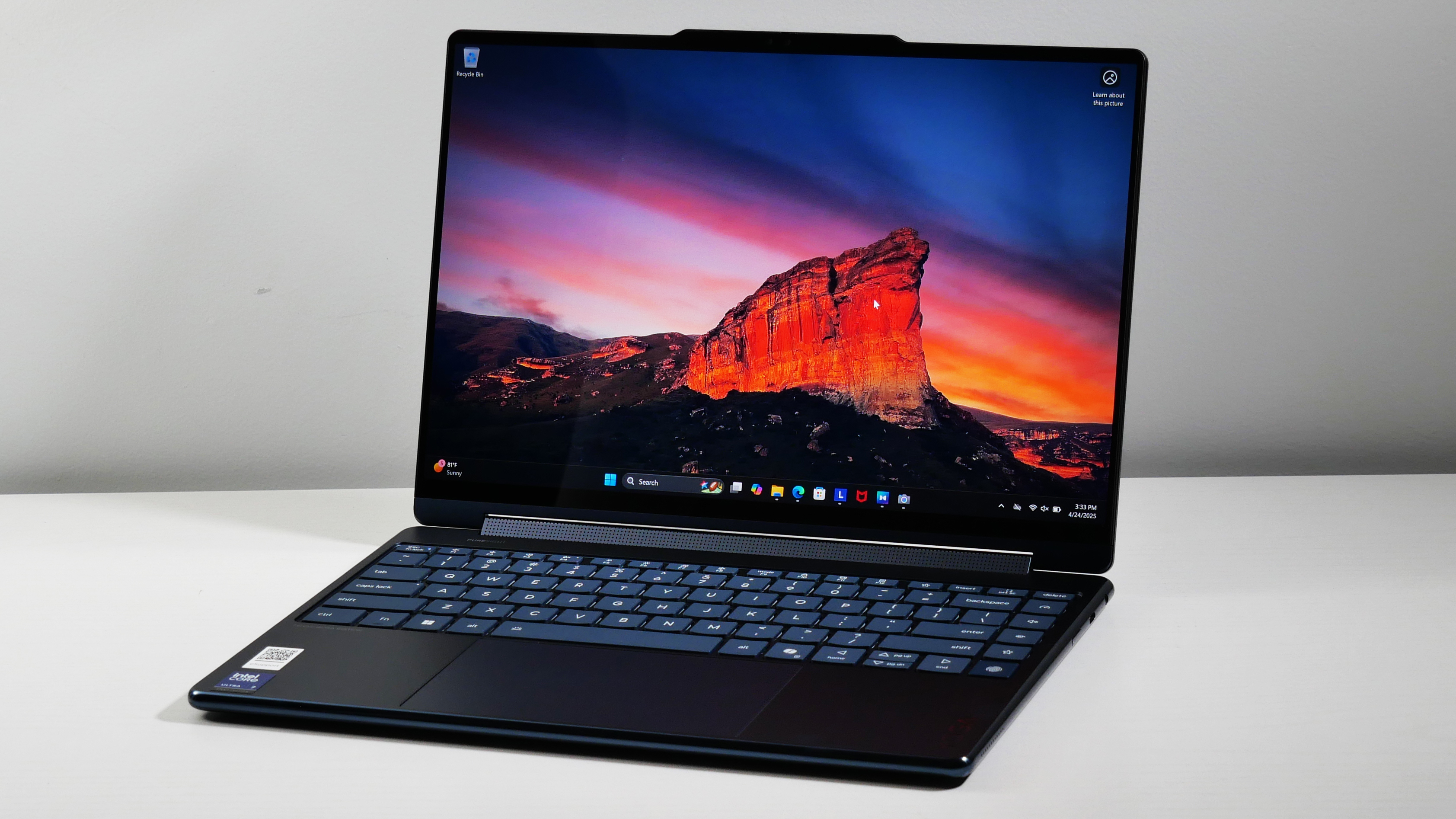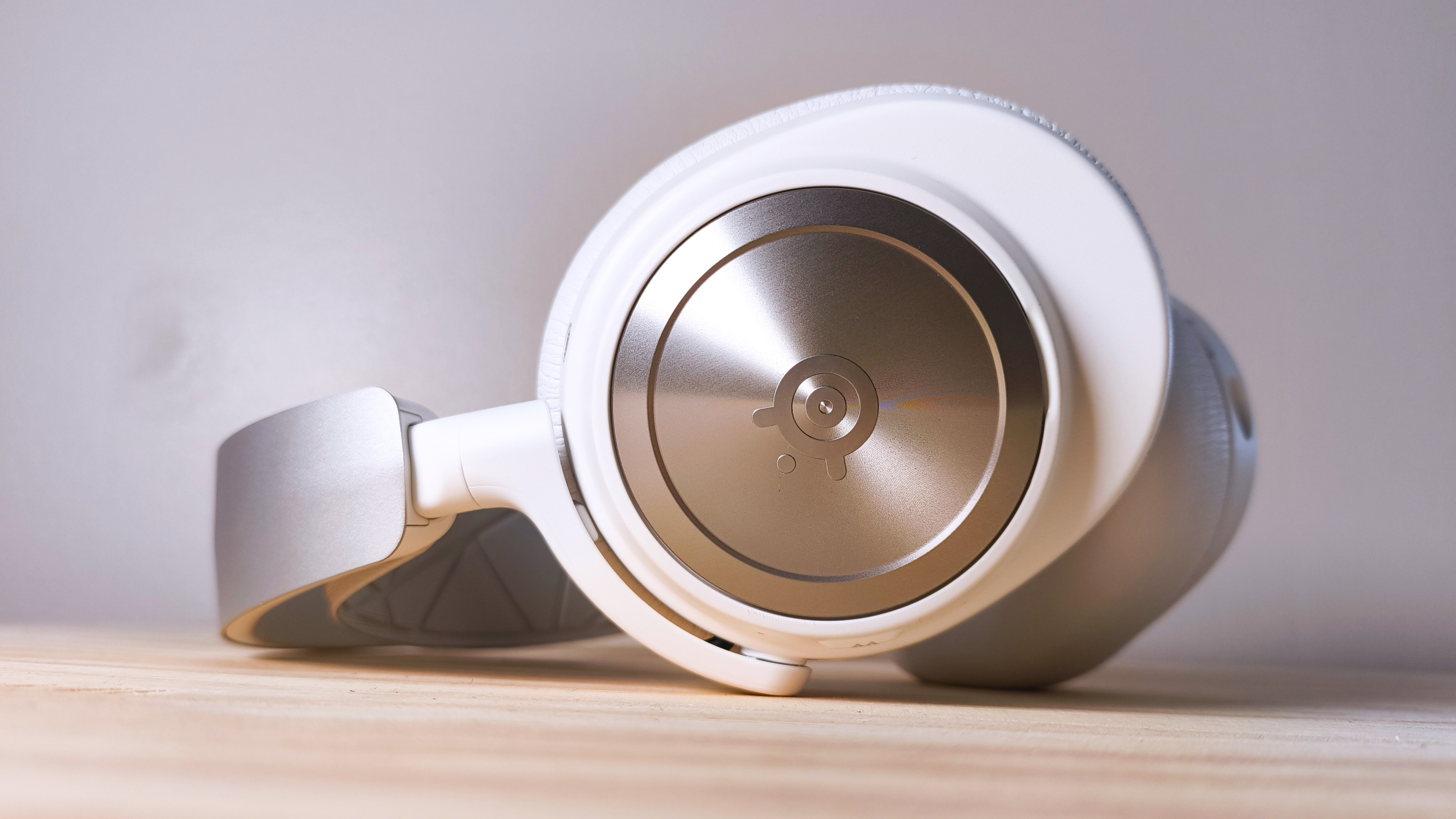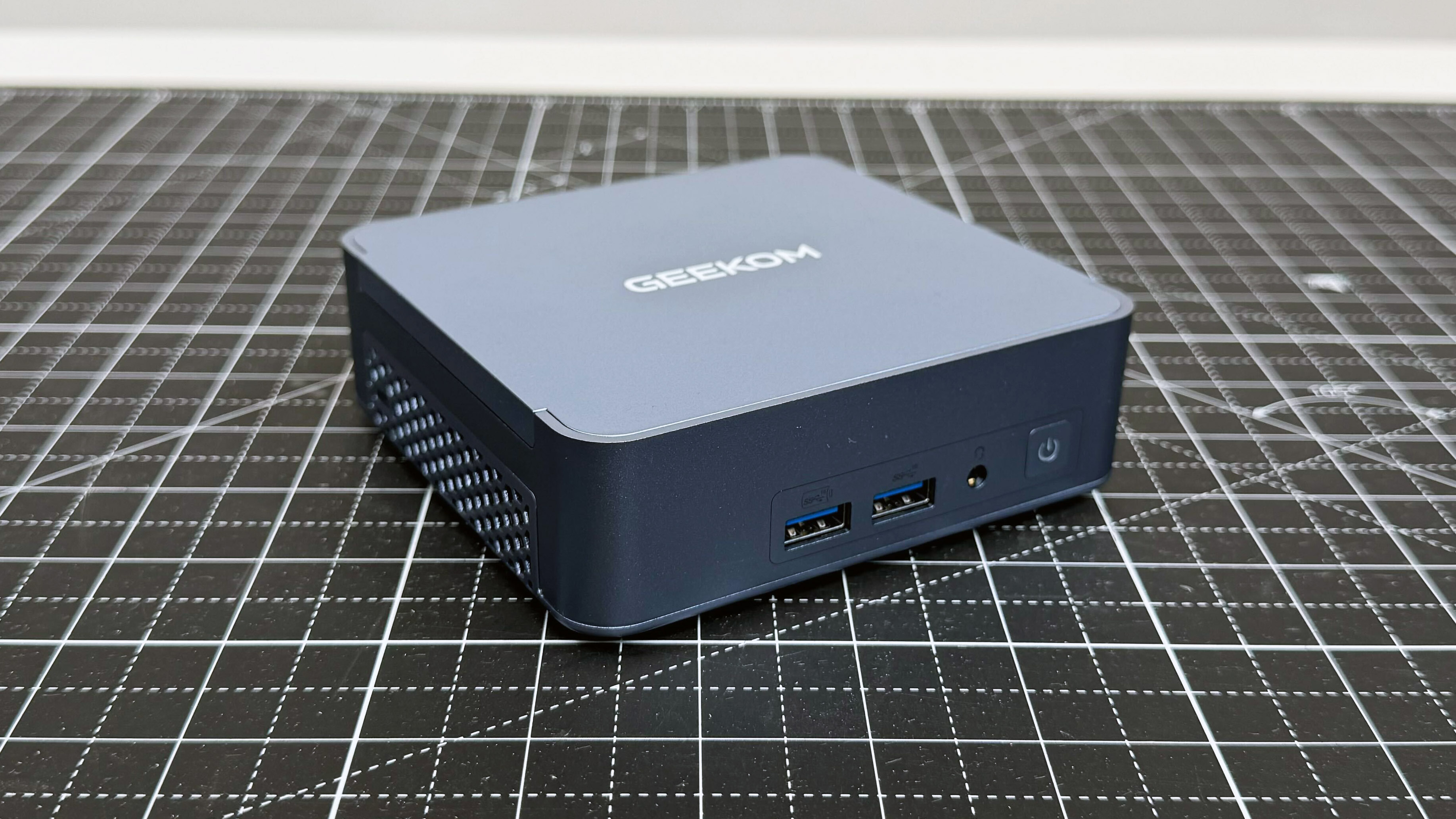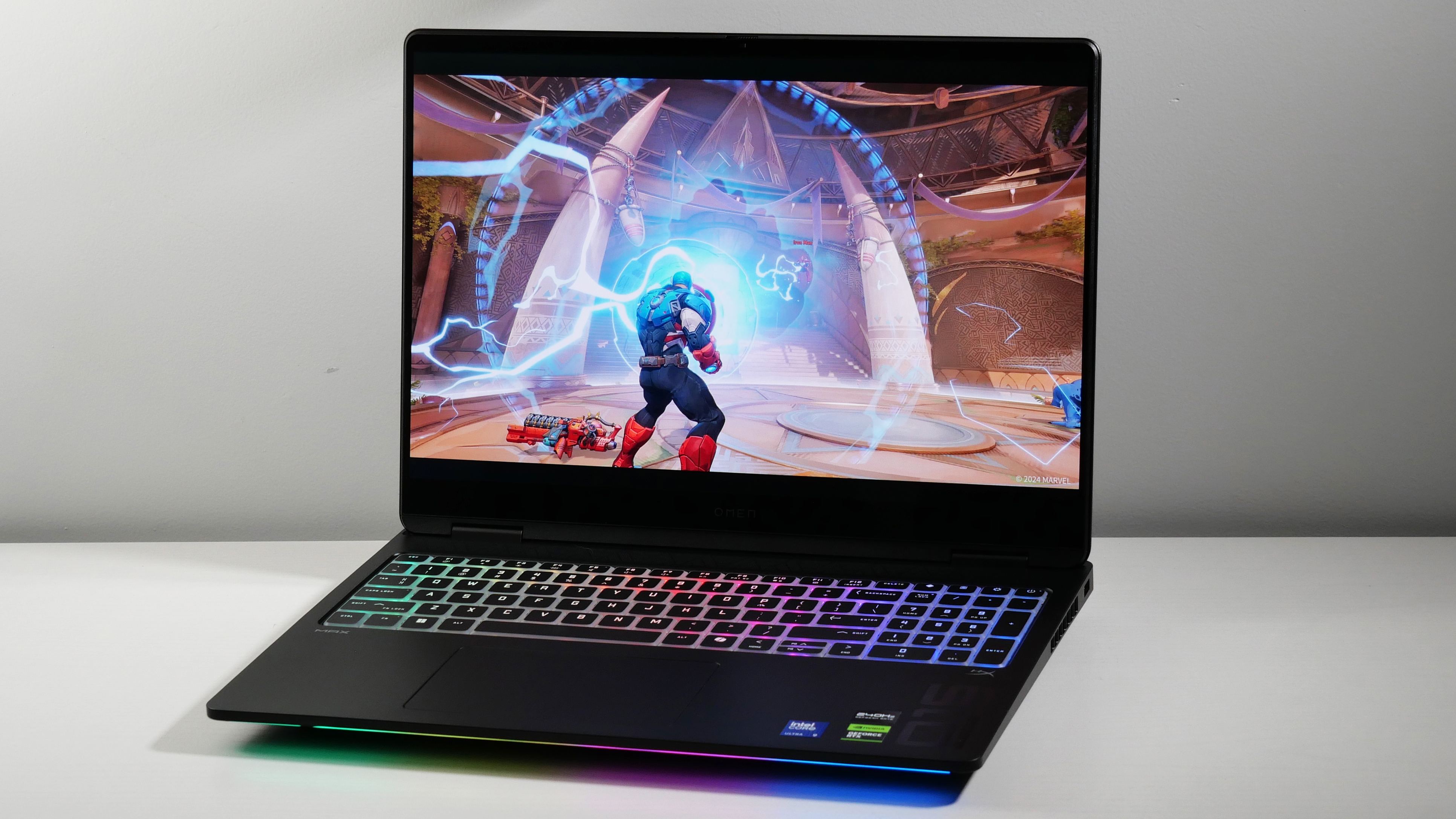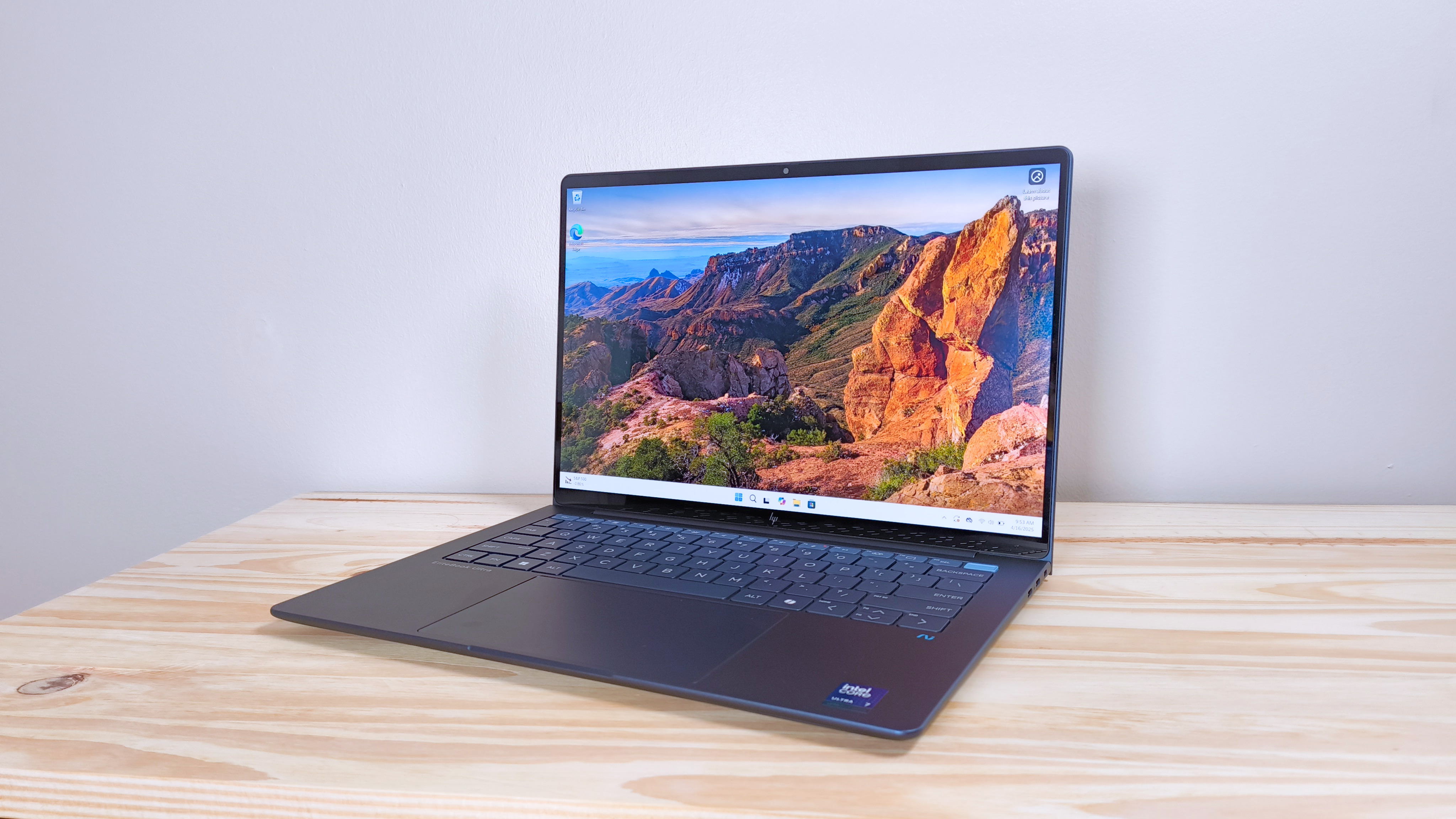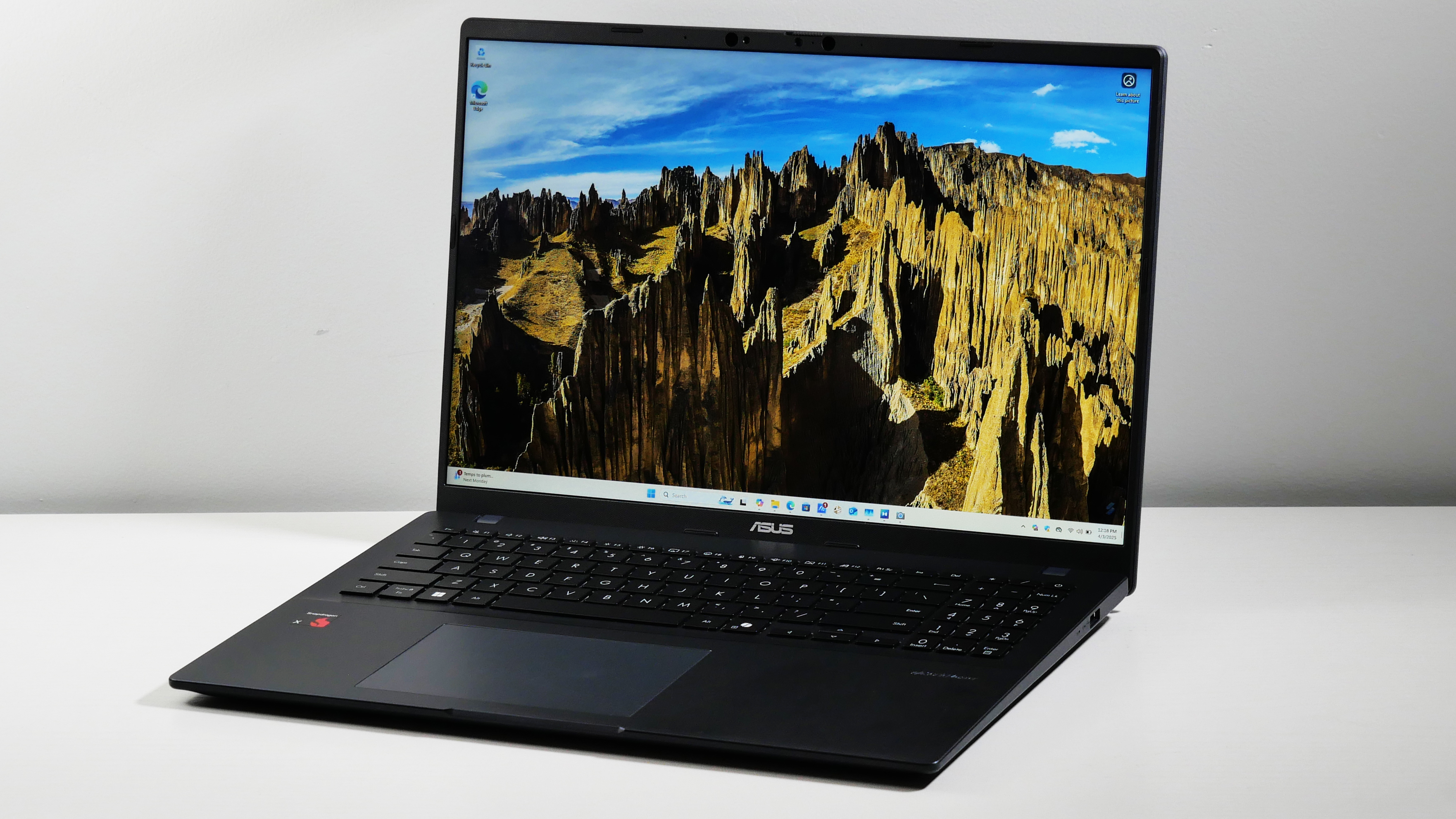Laptop Mag Verdict
The Xiaomi Redmi Note 11 is an exemplary budget smartphone option for those that don’t require flagship features, but it still dishes a handful of them out anyway.
Pros
- +
Smooth 90Hz AMOLED display
- +
Fantastic battery life
- +
Fingerprint sensor
- +
Bargain price tag
Cons
- -
Performance can be sluggish
- -
No 5G support
- -
Average cameras
Why you can trust Laptop Mag
Price: £199
OS: Android 11/ MIUI 13
Display: 6.4-inch 90Hz AMOLED DotDisplay
CPU: Qualcomm Snapdragon 680
RAM: 4GB
Rear cameras: 50MP wide (f/1.8), 8MP ultrawide (f/2.2), 2MP macro (f/2.4), 2MP depth (f/2.4)
Front camera: 13MP (f/2.4)
Storage: from 64GB
Battery: 5,000mAh
Size: 6.2 x 2.9 x 0.3 inches
Weight: 6.3 ounces
Budget smartphones are the unsung heroes of the phone industry. The more affordable they are, the more gobsmacked I am by the sheer amount of modern functionality you can get out of them. With each annual release of upgraded flagship smartphones, budget phones are hot on their trails shouting, “Oi! I can do what you do, but cheaper!”
The device causing a commotion on the sidelines this time around is the Xiaomi Redmi Note 11, which brings a fancy 90Hz AMOLED DotDisplay, a 6nm Qualcomm Snapdragon 680 processor, all-day battery life, and even a fingerprint sensor, to a £199 smartphone. What’s that, Samsung? Your $799/£769 Galaxy S22 offers a 120Hz AMOLED 2X with an adaptive 120Hz refresh rate? Okay, but try doing that at a fraction of the price.
I digress. Obviously, Xiaomi made sacrifices to cut the price of the Redmi Note 11 down, you won’t find the soon-to-be-standard 5G connectivity, bountiful processing power, or premium camera qualities that even some of the best budget smartphones have on tap. However, the Redmi Note 11 can also be found on that list, as it delivers all it can with a budget price tag.
Xiaomi Redmi Note 11 price and availability
At just £199, the Redmi Note 11 with 4GB of RAM and 64GB of storage is an extreme budget Android smartphone. Better yet, there’s an early bird offer that takes £20 off the price tag. Buying a phone for £179 is nothing new, but picking up a commendable smartphone for that price on launch day is a different kettle of fish. Xiaomi even throws in a phone cover in the box.
The Redmi 11 series also has the Redmi Note 11 Pro 5G on offer, which is expected to jump in price by around £100. Stay tuned for that review. Xiaomi doesn’t currently have plans to release the Redmi Note 11 series in the US, but the two phones are available in the UK and internationally. When compared to its competition, including the £349 Realme 9 Pro+, £389 iPhone SE (2020), £399 OnePlus Nord 2, and £499 TCL 20 Pro 5G, the Redmi Note 11 floors it’s opponents in price. However, these smartphones fittingly pack more desirable specs, which is worth keeping in mind.
Xiaomi Redmi Note 11 design
Here’s the thing about budget Android smartphones, they always try to mimic the designs of their flagship counterparts. This year’s flavour? A sprinkle of the Galaxy S22’s front display with a surprising side dish of the Realme 8 5G’s back cover — with a literal lens as the cherry on top.

I say this, but the Redmi Note 11 doesn’t deviate much from the Note 10. It has the same smooth rounded edges, hole-punch camera placed at the centre on the top-end of the phone, along with a similar camera layout with a sizable lens sitting on top of the smaller lenses. This time, however, the smaller lenses are laid out like a square (like the Realme 8), and Xiaomi has ditched the sidebar that housed the flashlight.
The Redmi Note 11 comes in three colour variants, including Graphite Gray, Twilight Blue and Star Blue. We received the grey model, and while it sports a sharp design reminiscent of much more expensive smartphones, it’s nothing to write home about. There aren’t any distinct features that set it apart from any other Android phone on the market, except for the plain “Redmi” logo on the rear of the phone. The other colours offer a touch more spark of life, but with a plastic back cover, expect each one to be riddled with fingerprints.

Speaking of fingerprints, the phone is also equipped with a fingerprint sensor embedded in the side power button. It’s accurately placed to make it easy for me to put my thumb on the button and unlock it without a second thought. Plus, the recognition is super snappy. Thanks to the rounded edges and slimmer design, the phone is also a joy to hold.
With dimensions of 6.2 x 2.9 x 0.3 inches and weighing 6.31 ounces, the Redmi Note 11 is smaller than it's ever been, albeit heavier by a miniscule than the Redmi Note 10 at 6.3 ounces. It’s smaller and lighter than the OnePlus Nord 2 (6.3 x 2.9 x 0.32 inches, 6.7 ounces) and TCL 20 Pro 5G (6.5 x 2.87 x 0.35 inches, 6.7 ounces) despite housing a 5,000mAh battery.
Xiaomi Redmi Note 11 display
Boasting a 6.4-inch 90Hz AMOLED DotDisplay, the Redmi Note 11 is surprisingly a good device to scroll through social media apps and watch the latest streaming shows on. I mean, an AMOLED panel with 90Hz for under £200? That’s amazing.
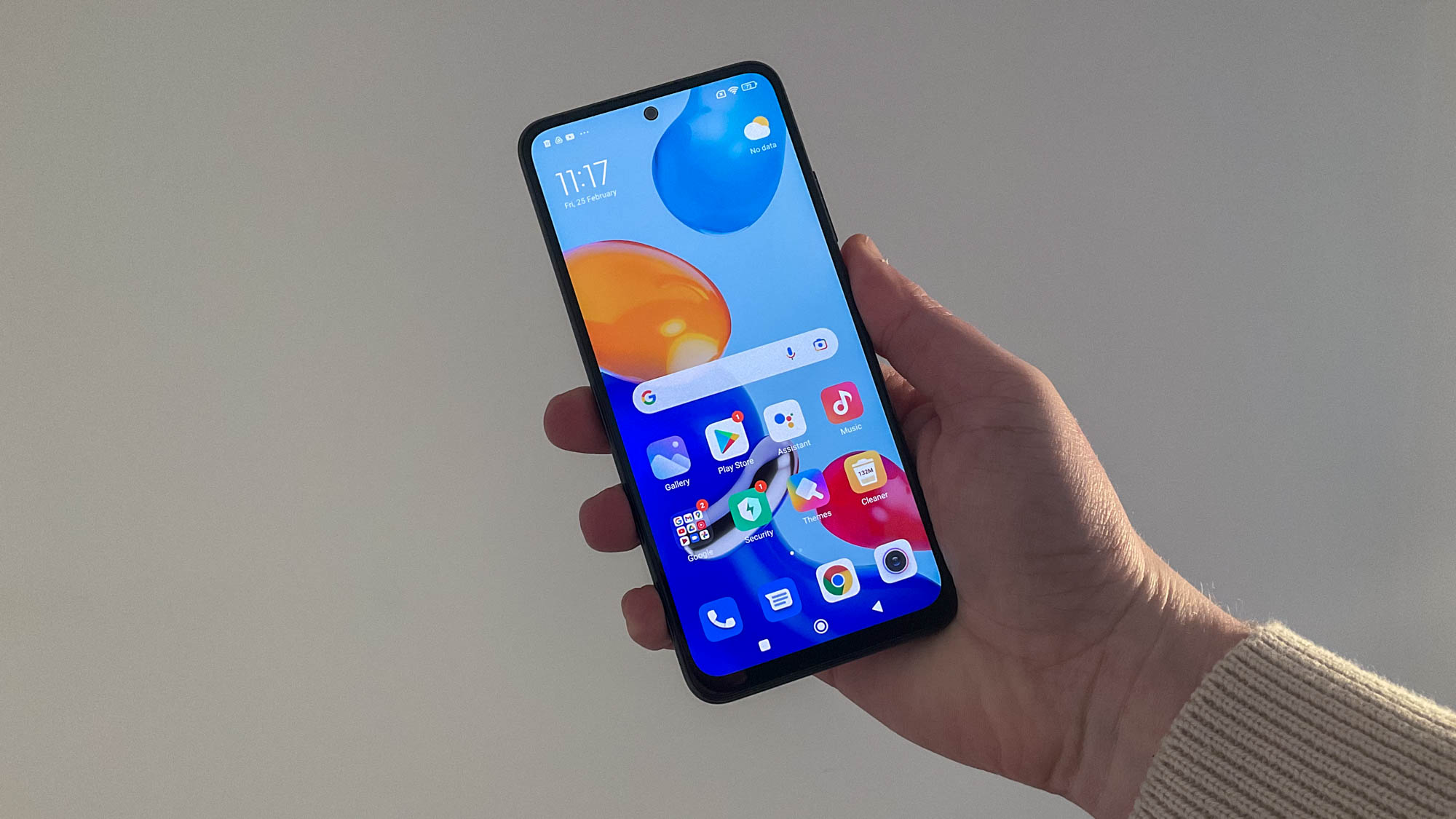
Navigating between apps or surfing through websites looks sleek and responsive, while also being bright enough for comfortable viewing. You won’t find video enhancers such as SDR-to-HDR technology or support for HDR10+, but I was still seeing plenty of detail, vivid colours and brightness in everything I watched.
I decided to watch the fairly forgettable yet enjoyable Red Notice on Netflix, and was amazed by the fluid detail of The Rock nearly getting blown to pieces during his escape on a bridge. The explosion effects were crisp, while the backdrop of the icy landscape as Ryan Reynolds said “uh oh” before gunning down troops with a fully-armed helicopter was exciting. While colours didn’t especially stand out, I couldn’t ask for anything more from a phone at this price.
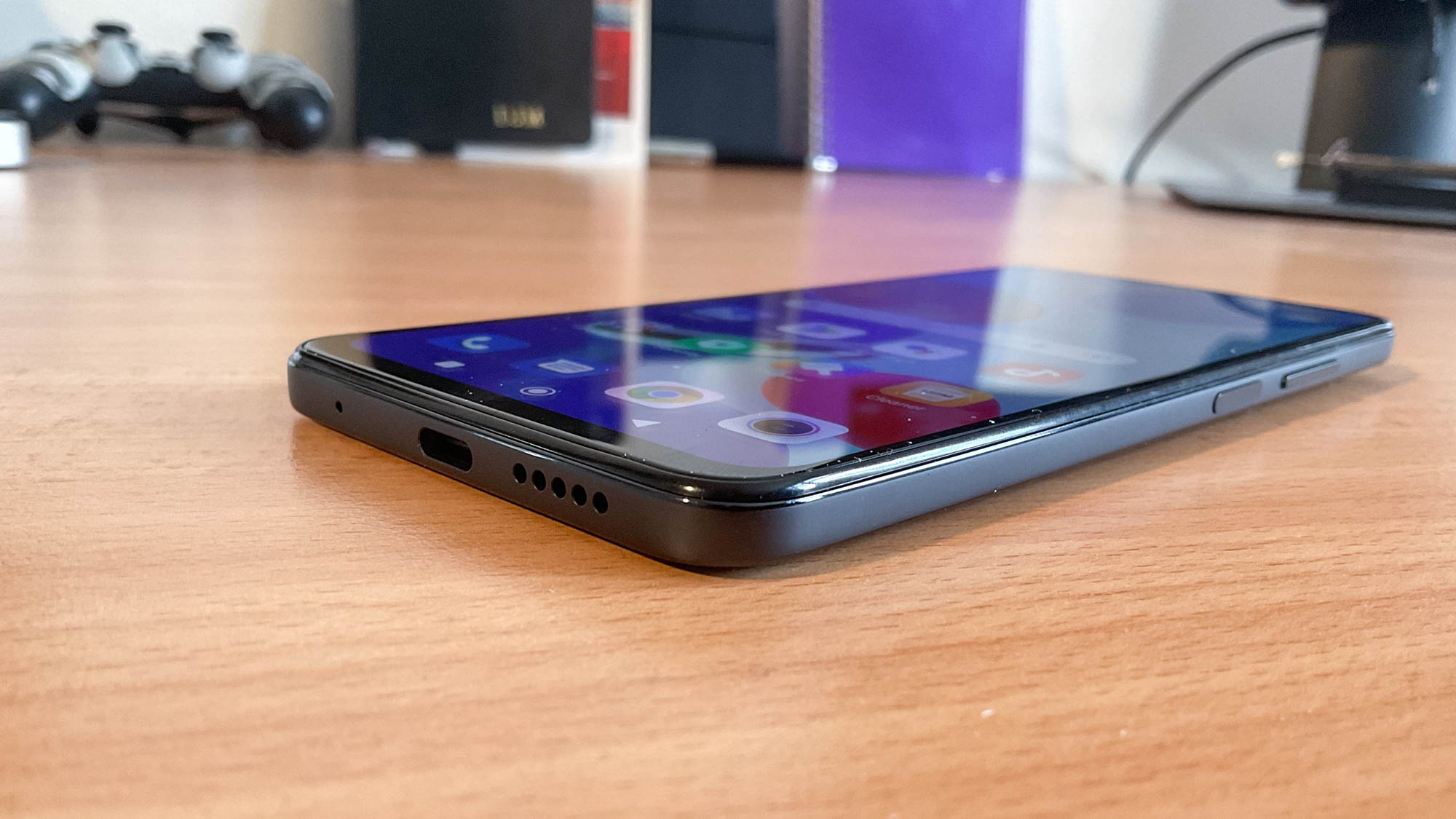
Display settings are limited, with the only notable options being switching between light and dark mode, along with a “Reading mode” that adjusts colours and textures so it less strain on the ‘ol peepers. You’ll also find a small chin at the bottom of the display, losing the edge-to-edge effect the rest of the display sports. It isn’t as noticeable as the chin on the Realme 9 Pro+, making it only a minor annoyance. All in all, I’m impressed.
Xiaomi Redmi Note 11 audio
If you’re looking to turn your phone into a makeshift speaker, the Redmi Note 11 may be up for the task. Its dual stereo speakers placed at either end of the smartphone have the volume to do so, and audio is reasonably clear. Most prefer to use headphones on their smartphone, however, and the good news is the Redmi Note 11 sports a 3.5mm audio jack.
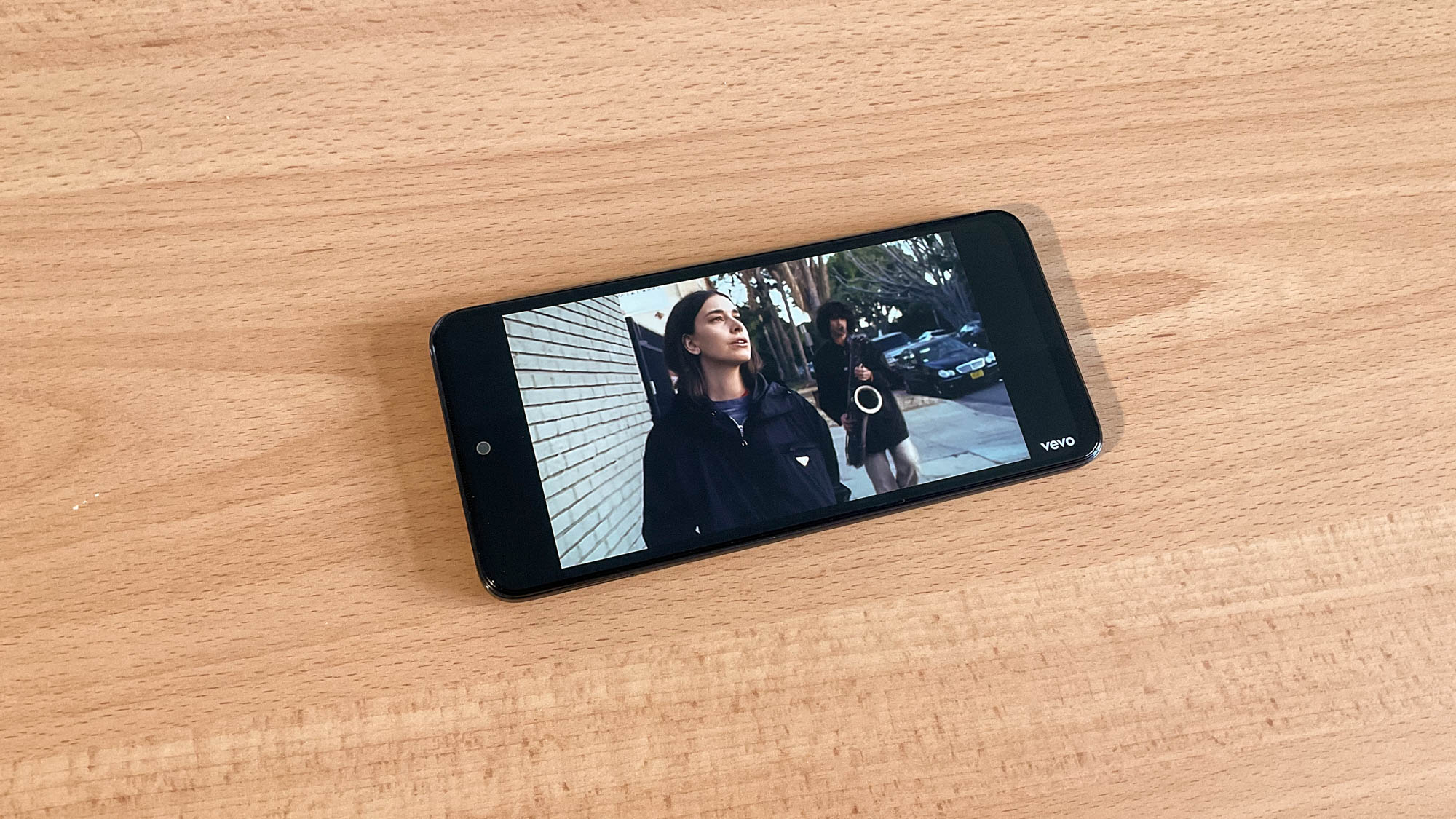
After watching Paul Thomas Anderson’s Oscar-nominated Licorice Pizza, I started listening to more of HAIM — the band lead actress Alana Haim is part of. I listened to “Summer Girl” and was pleasantly surprised by the rich audio from the dual stereo speakers. The mellow instrumentals, from the bass to the bashing hit-hat from the drums, were crisp, while the slightly sombre vocals played through the speakers clearly.
I then switched to something with more of a beat: Tiesto & Ava Max’s “The Motto.” I cranked up the volume to jam to the trending dance tune, and while the melody was satisfying, there wasn’t much bass to really give the song the “oomph” it strives for. Understandable, though, seeing how these are simple dual stereo speakers.
Xiaomi Redmi Note 11 performance
With a Qualcomm Snapdragon 680 6nm processor with a Qualcomm Adreno 610 GPU, 4GB of RAM and 64GB for storage, the Redmi Note 11 won’t be churning out blazing fast processing speeds, and I was disappointed with the few hiccups I experienced when doing otherwise simple tasks.

To put it to the test, I opened a couple of dozen active Google Chrome tabs while watching Red Notice on Netflix in a small window. I also slipped between the Chrome tabs and Call of Duty: Mobile to see how fast it could switch between the two. Unfortunately, I experienced slow load-up speeds when opening up to 20 different tabs, along with the Call of Duty: Mobile app crashing when slipping between tabs. At one point, the YouTube app randomly crashed and wouldn’t open unless I exited it via the Overview menu. However, opening apps without putting the burden of other demanding apps on the chip at the same time meant seamless scrolling, watching, or game time.
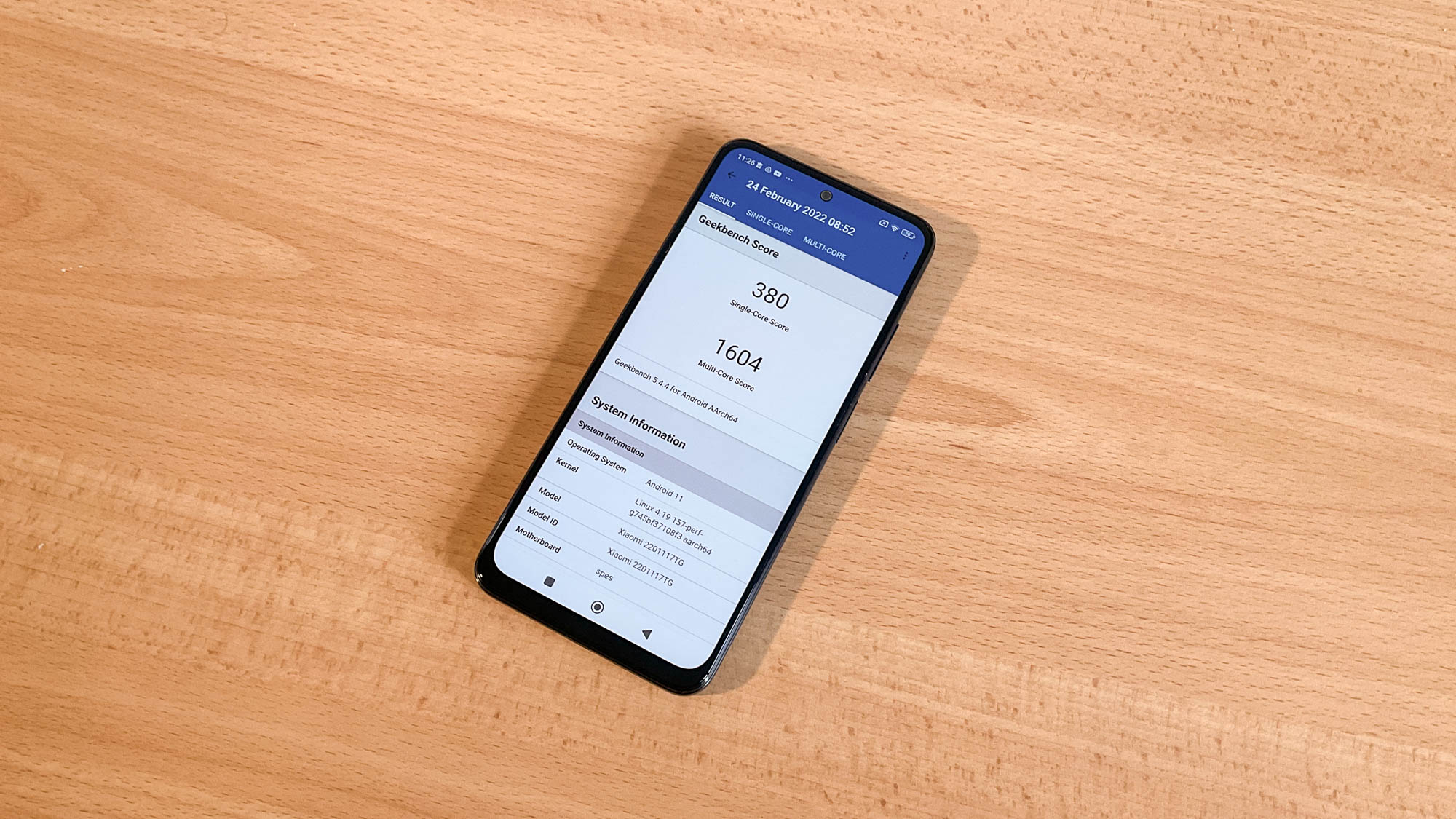
This adds up in our Geekbench 5 test. The Redmi Note 11 delivered a multi-core score of 1,604, which is a considerable distance behind other budget smartphones that aren’t that much more expensive. This includes the Realme 9 Pro+ (MediaTek Dimensity 920 5G, 2,318), which blazes past all its competition, the Samsung Galaxy A52 (Snapdragon 720G, 1,903) and the TCL 20 Pro 5G (Snapdragon 750G, 1,922). It also falls far behind the OnePlus Nord 2 (Mediatek Dimensity 1200-AI, 2,697), but still beats Google’s latest budget smartphone, the Google Pixel 5a (Qualcomm SM7250 Snapdragon 765G 5G, 1,354).
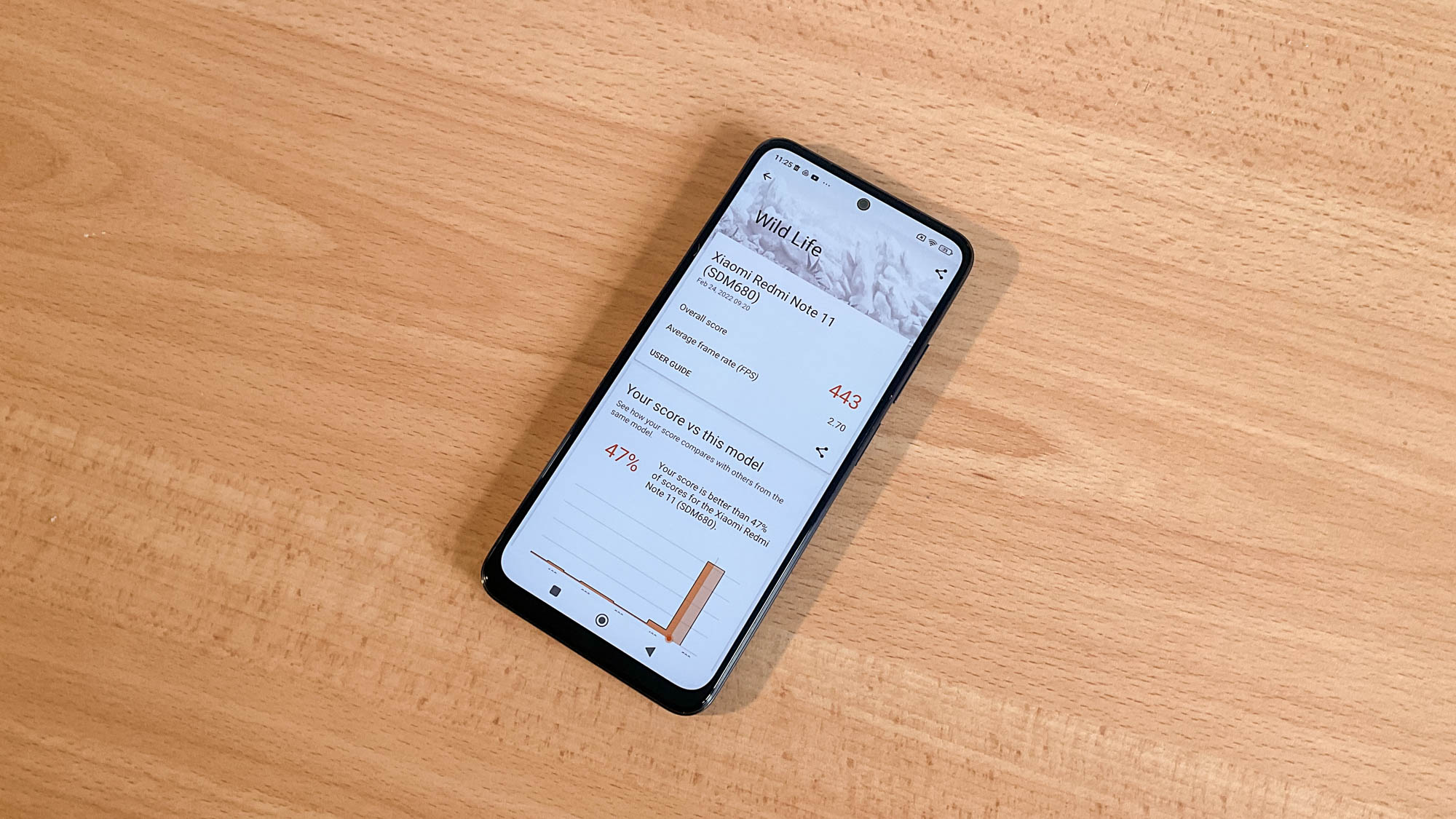
In the 3DMark WildLife Unlimited test, the Redmi Note 11 clocked an overall score of 443 with an average frame rate of 2.7 frames per second. Yikes. That’s worse than the already disappointing TCL 20 Pro 5G (6.7 fps) and Galaxy A52 (6.6 fps), and is a potato even when compared to the Realme 9 Pro+’s 13.8 fps. To put that into context, the Samsung Galaxy S22 busted out 60 fps.

Unexcitedly, I took on Call of Duty: Mobile’s team deathmatch mode to see how the phone plays in real-world use. My expectations were low, so I was more than happy to see settings automatically switch to “medium” graphic quality and to “medium” frame rates. While I wasn’t on top form, I was still able to nab a few kills thanks to the average frame rates. You can definitely game on this phone, but don’t expect to crank up settings on Genshin Impact or PUBG Mobile to max.
Xiaomi Redmi Note 11 battery life and charging
A 5,000mAh battery capacity in a £199 smartphone? It makes you wonder why the £1,599 Sony Xperia Pro-I only uses a 4,500mAh battery. Plus, the Redmi Note 11’s 33W Pro fast charging means I could charge up from 0% to 100% in just over an hour. Not that it ever got to 0%, mind you.

I was able to eke out over one day of moderate usage, charging it up once it dropped below 10% and getting it to 50% in 29 minutes. This is incredibly handy for those in need of a quick burst of juice before setting off for the day. Plus, for those just using the Redmi Note 11 for more general tasks, such as web browsing, messaging or checking their social media apps, you can definitely get two days out of the device.
After heavy usage, which included video calls, watching YouTube videos and Netflix shows, playing Call of Duty: Mobile, scrolling through social media, snapping pictures and shooting video, I was left with under 10% before I hit the hay after a day. Not bad for a budget device. You’ll also find a battery save mode and an “Ultra battery saver” if you’re looking for even longer battery life.
Xiaomi Redmi Note 11 cameras
The Redmi Note 11 impressively packs four shooters on the back of the device, along with a good front-facing lens. The 50MP wide-angle AI quad-camera does a fine job at snapping pictures on the fly, but it won’t offer the finer details or rich, natural colours found on other smartphones. Plus, two of the lenses — the depth and macro — will barely be used.



The Redmi Note 11 is equipped with a 50MP wide with an f/1.8 aperture, 8MP ultra-wide with f/2.2 and 118-degree angle, 2MP macro with f/2.4, and 2MP depth with a f/2.4, along with a 13MP with f/2.4 aperture on the front. That’s nearly identical to its predecessor — which sported a 48MP wide instead. More or less, these are previous-gen cameras, but they can still capture some decent shots.
I went out on a stroll through my local canal to capture the green scenery and an array of canal boats on a somewhat cloudy day, switching between each of the lenses. The 50MP wide lens does a good job at focusing on particular objects, such as the bridge or boats, capturing cool greys and spots of blue sky. However, there are some grainy effects between the wide and ultra-wide lens, and I did find colours weren’t standing out once the sun hid behind clouds. I also experienced some trouble in contrast between light and dark areas, as those areas with dim lighting look far too dark.



However, there is a Pro mode option that allows users to freely control the ISO, shutter speed, lens type and more. While fairly basic when compared to the Xperia Pro-I, these options allow far more control for those more proficient in camera tech. There is also a Night mode, but I didn’t find much difference between this mode and just using the regular camera option.
The cameras also support video at up to 1080p at 30fps, which is fine when I want to take a quick video of something, but that’s the extent I’d be using its video features. Not everyone needs the cinematography capabilities found in the iPhone 13 or Sony Xperia Pro-I, so I didn’t expect anything more from Redmi. As for the 13MP selfie camera, I was pleasantly surprised by the detail it captured, but the snaps I took still looked a touch air-brushed, while a slight camera shake made the selfie camera’s display look jittery.
Xiaomi Redmi Note 11 software
Running MIUI 13 over Android 11, it’s disappointing to see it not come with Android 12. What’s worse, Xiaomi doesn't officially state the amount of software updates for each of their phones, but the Redmi Note series generally only gets one major Android update. Still, Xiaomi has committed to extending Android updates for its recent line of phones, but it’s difficult to know if this applies to its Redmi Note 11 series. The Redmi Note 11 also doesn’t come with 5G, which is understandable considering the price tag. Still, budget smartphones with 5G aren’t that much more expensive, so customers will be losing out on faster connectivity.

MIUI 13 isn’t anything special, offering the bare minimum of unique personalisation tools and an interface that feels a tad dated. Those looking at phones in this price bracket shouldn’t be fussed, seeing as there are still the usual Google apps such as Google Assistant, along with staple apps like the calculator, clock, recorder, and more. You’ll also find a bunch of Mi-centric apps that luckily don’t annoy you with constant notifications or updates like my previous Vivo V19.
On the plus side, the Redmi Note 11 comes with dual SIM and a microSD slot, along with AI face unlock and a fingerprint sensor on the side power button. You’ll also find edge lighting whenever you get a notification, which is a nice touch.
Bottom line
It’s difficult to flag a phone on too many weak points when it’s being sold at a dirt-cheap price. Sure, the Redmi Note 11’s Snapdragon 680 is sluggish, it doesn’t come with 5G capabilities, and it’s design isn’t anything to brag about. But for £199 it goes above and beyond with a 90Hz AMOLED display, dual speakers (with the added bonus of an audio jack), fantastic battery life and snappy security features like its fingerprint sensor.
The Redmi Note 11 is an exemplary budget smartphone for those that don’t require flagship features, but it still dishes a handful of them out anyway. The display is fantastic for watching shows, the processor can still handle average tasks and acceptable gameplay, and battery life won’t disappoint. The cameras won’t provide the crisp details many smartphone enthusiasts are after, but they can still shoot a commendable shot.
Whether you’re in need of a backup smartphone or can’t be fussed to spend north of £700 for a flagship device you’ll barely get the most out of, then the Redmi Note 11 is a fantastic pick. Check out the rest of our best budget smartphones, especially if you’re in need of 5G connectivity at a bargain price.

Darragh Murphy is fascinated by all things bizarre, which usually leads to assorted coverage varying from washing machines designed for AirPods to the mischievous world of cyberattacks. Whether it's connecting Scar from The Lion King to two-factor authentication or turning his love for gadgets into a fabricated rap battle from 8 Mile, he believes there’s always a quirky spin to be made. With a Master’s degree in Magazine Journalism from The University of Sheffield, along with short stints at Kerrang! and Exposed Magazine, Darragh started his career writing about the tech industry at Time Out Dubai and ShortList Dubai, covering everything from the latest iPhone models and Huawei laptops to massive Esports events in the Middle East. Now, he can be found proudly diving into gaming, gadgets, and letting readers know the joys of docking stations for Laptop Mag.
